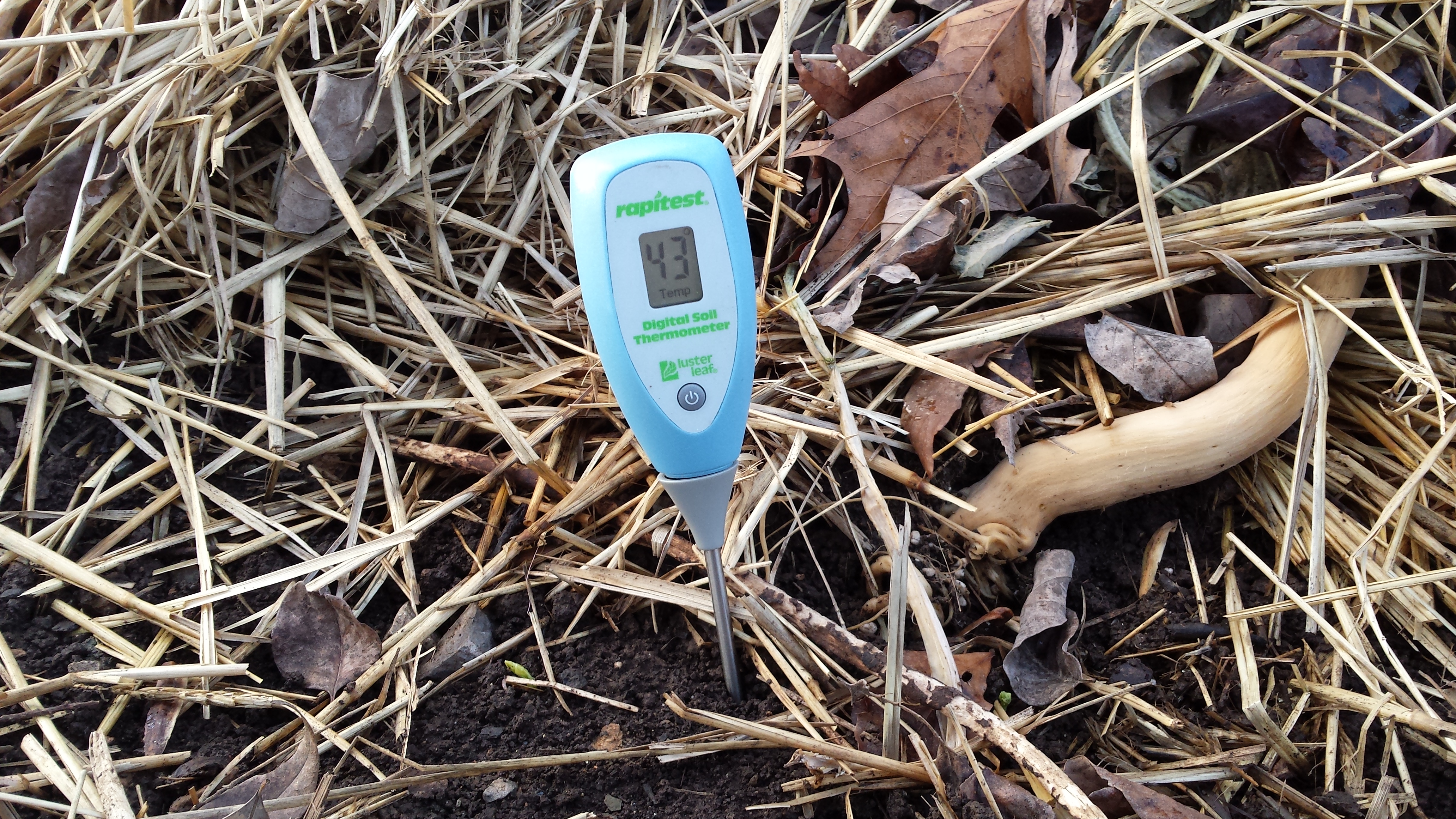
I get a lot of questions this time of year, generally consisting of, “Can I plant X right now?” The air is feeling a little warmer and on days when the sun manages to shine, spring fever starts to rage in the hearts and minds of every gardener I know. The air temperatures may be in the 60s, but this isn’t actually a good indication that it’s time to start planting spring crops. Seeds need the soil to be at a certain temperature before they will germinate. If the soil is too cool, then at the very best, they will take much longer to emerge and at the worst, they will succumb to rot.
Vegetable seeds will germinate at a wide range of soil temperatures. Most seeds prefer to germinate in a range between 60 and 90 degrees. Some seeds are so sensitive to soil temps that they won’t germinate if the soil is too hot or cold. Spring crops tend to prefer cooler soils, and some crops will germinate even when the soil temp is just barely above freezing. However, put these seeds in soils that are above 85 or 90 degrees and germination rates can drop to zero. Conversely, summer crops need soils to be at least 60 degrees and many will germinate in soils up to 105 degrees! To see the range of soil temp germination rates for different crops, check out this chart from University of California Cooperative Extension.
To test your soil temps, you’ll need a special soil thermometer. Luckily, these are generally inexpensive, and even a nice digital one will not set you back more than $15. Unless you have a particularly well stocked gardening store near you, you’ll probably need to purchase one online. Despite being an incredibly handy gardening tool, soil thermometers are not that well known. However, it’s a small investment that will pay off in big dividends, letting you know exactly the right time to get your crops in during the spring.
Unlike air temps, if you find your soil temp to be too cool for planting, there are things you can do to warm it up. Short term, covering your garden plot with either clear or black plastic or tarps will help it warm up. The plastic keeps the rain off, helping the soil to dry out so it’s easily workable. Black plastic absorbs heat and clear plastic transmits and traps it, so whatever you have on hand or is easier to acquire will work. Fabric row cover will also work, but it lets rain in, and won’t help the soil dry if you’re having a wet spring.
Long term, adding plenty of organic matter to your garden will help it warm up faster in the spring (it has numerous other benefits too, that I’ll continue to discuss throughout the year). Organic matter (aka composted plant material or herbivore manure) has the magical properties of helping soils to both drain well and retain adequate moisture. When these properties are balanced, soils are neither too wet or too dry and will warm up sooner in the spring. If you create permanent raised planting areas, this increases both drainage and solar gain, again giving you a few extra degrees of warmth in the early spring months. This could mean installing raised beds made of wood or other materials. It can also be achieved simply by hilling up your planting areas and creating permanent planting beds and walkways, so you aren’t compressing the planting areas by walking on them.
Anyone who has taken a gardening class with me knows that I often harp on the importance of using mulch. The one time a thick layer of mulch can be detrimental is in the early spring when you are trying to warm up your beds. If you did mulch heavily in the fall, rake back the remaining mulch a few weeks before you’d like to plant to let the soils warm up in the sun. This can cause weeds to germinate, but they should be easy to kill just before you want to get your seeds in. Once your seeds germinate, gently place the mulch back around the base of the plants and add more as your plants grow.


Leave A Comment